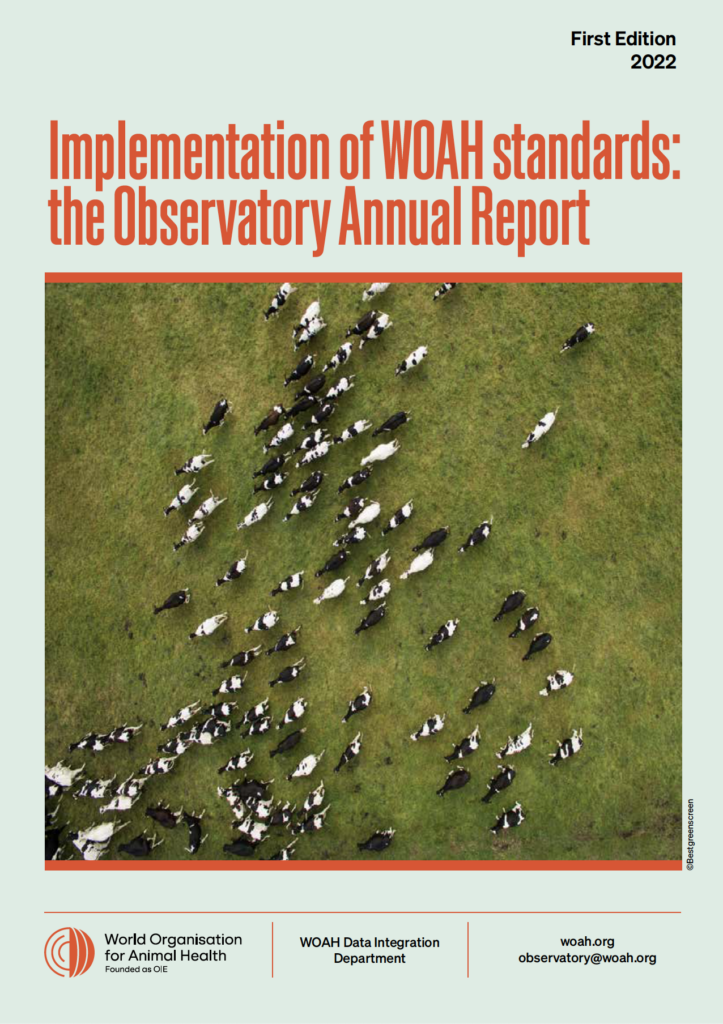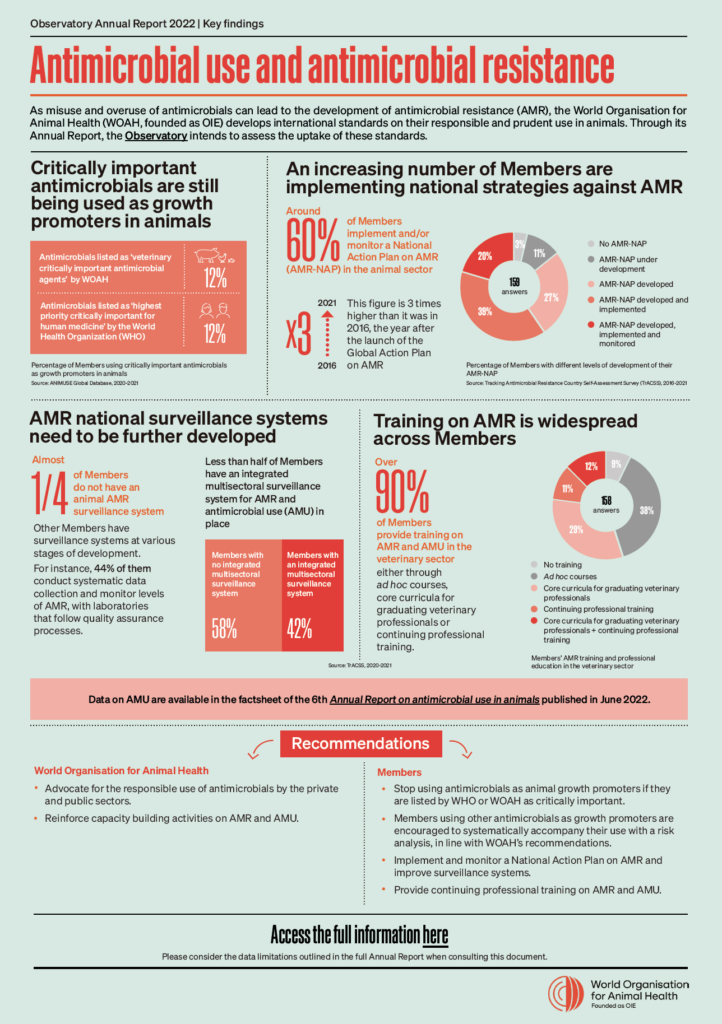Monitoring antimicrobial use and resistance
As misuse and overuse of antimicrobials can lead to the development of antimicrobial resistance, the World Organisation for Animal Health (WOAH, founded as OIE) develops international standards on their responsible and prudent use in animals. Monitoring antimicrobial use and resistance can bring valuable insights for both WOAH and WOAH Members.

Through its Annual Report, the Observatory presents a global overview of the level of uptake of WOAH standards that relate to monitoring antimicrobial use and resistance.
How can you access our antimicrobial use and resistance analysis?
The antimicrobial use and resistance dashboard presents the results of the analysis in an interactive way.
To discover the results of our antimicrobial use and resistance analysis, access the full report as well as the one-page executive summary.
How did we monitor the implementation of standards related to antimicrobial use and resistance?
Monitoring the implementation of standards related to antimicrobial use and resistance requires building and analysing indicators using various data sources.
What antimicrobial use and resistance indicators did we use to monitor the implementation of these standards?
Several indicators made it possible to monitor the implementation of standards related to antimicrobial use and resistance, among them:
Number of Members that submitted their annual report on the use of antimicrobials in animals to WOAH
Number of Members that provided quantitative information on the use of antimicrobials in animals to WOAH in their annual report
Number of WOAH Members using antimicrobial agents as growth promoters
Trend in the quantity of antimicrobial agents intended for use in animals
Number of WOAH Members using growth promoters that are listed by the WHO as critically important for human medicine
Number of WOAH Members using growth promoters that are listed by WOAH as Veterinary Critically Important Antimicrobial Agents
Trend in the quantity of antimicrobial agents intended for use in animals
Percentage of Members in the different levels of development of their National Action Plan on Antimicrobial Resistance
Number of Members that reported having an integrated multisectoral surveillance system for AMR and antimicrobial use
Percentage of Members in the different levels of development of their animal health surveillance system
Training and professional education on antimicrobial resistance in the veterinary sector
What data sources did we use to build antimicrobial use and resistance indicators?
Four main data sources made it possible to build the monitoring indicators:
Antimicrobial use:
Data extracted from the AMU database, as compiled by the WOAH AMR and Veterinary Products Department, from the first round of data collection (October 2015 – May 2016) to the sixth round (2020–2021)
WHO List of Critically Important Antimicrobials for Human Medicine, since the fourth round (September 2018 – May 2019)
WOAH List of Antimicrobial Agents of Veterinary Importance
Action plans, surveillance systems and training:
Data extracted from the annual Tracking Antimicrobial Resistance Country Self-Assessment Survey (TrACSS) (2016–2021)
More on the topic
-
Observatory
The Observatory is a transversal programme that provides an overview of the uptake of international standards on animal health and welfare and veterinary public health by our Members. It contributes to the progressive improvement of their implementation as well as to the constant assessment of our corporate initiatives by providing valuable feedback and recommendations.Discover -
Antimicrobial resistance
Imagine a world where infections and diseases in humans, animals and plants are impossible to treat. This worst-case scenario could become a reality as bacteria, viruses and parasites develop resistance to the drugs we use to fight them. Antimicrobial resistance, or AMR, has become one of the most pressing health issues of our time. Solutions exist and everyone has a role to play in the fight against this global threat.Discover
-
.pdf – 3 MB See the document
-
.pdf – 309 KB See the document


